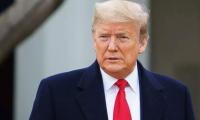admitting that the public should be suspicious of the bank notes that bank tellers and ATM machines issue to them? And what about those who have been given counterfeit notes by bank tellers? Will there be a mechanism in place for them to be issued the correct notes? The issue with this, as the finance secretary correctly noted, is that giving compensation to those who have been defrauded would encourage suppliers of counterfeit notes. But here, it is clear that the regulatory failure is the government’s. How can it deprive people who took money from banks, thinking it to be perfectly legitimate, of hundreds of thousands of rupees of their legitimate earnings? The SBP may be caught between a rock and a hard place, but this situation is of its own making. It must rectify the issue, but much before the 2017 timetable it has offered. Otherwise, the already shaky banking system in the country will lose even more credibility.
Having said that, while Trump loves throwing tantrums, he is only naked face of American exceptionalism
In Pakistan, International Monetary Fund-led economic reforms have hit poor and working class hard
Kiwi bowler Ben Sears emerged as one of standouts of series, claiming five-wicket hauls in final and second ODIs
Some believe internal discord is deliberate strategy by Imran himself to prevent any alternative leadership from...
Only way forward is through meaningful dialogue and political accommodation
Following consensus with IMF, PM Shehbaz Sharif on Thursday announced a reduction in power tariffs







